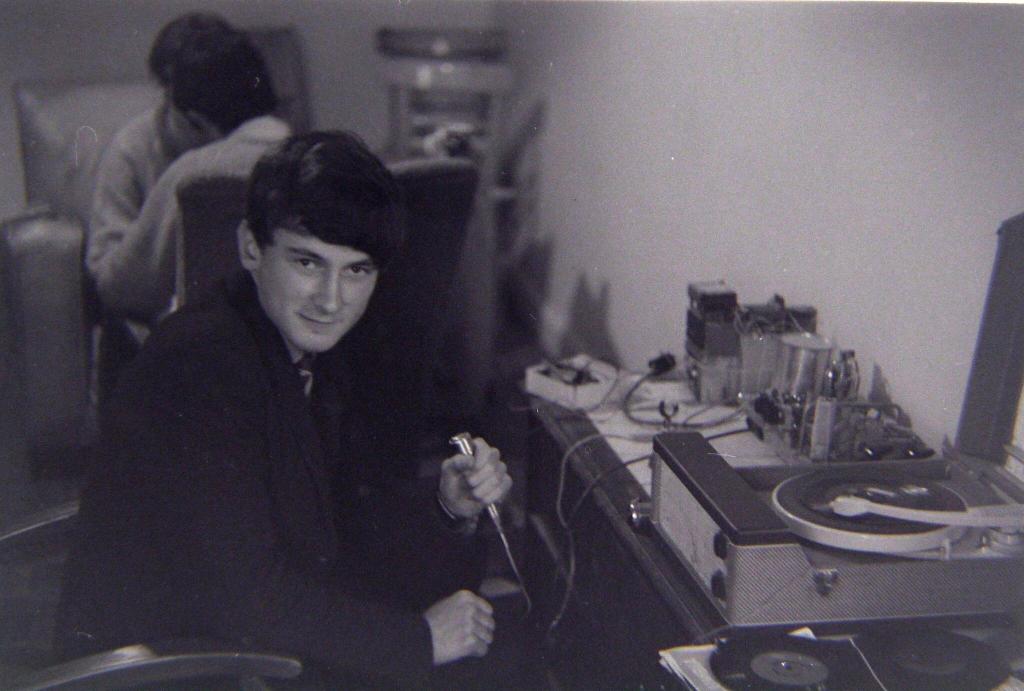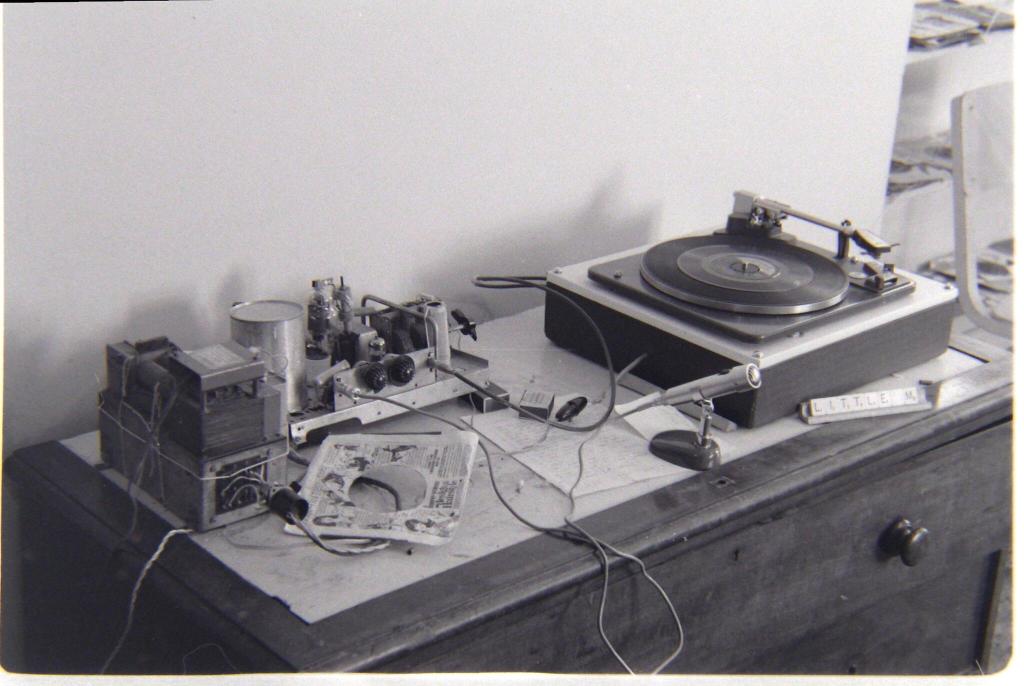
In the mid 60’s in Britain, there were two TV sources, BBC(British Broadcasting Company) and ITV (Independent TV). However, there was only one legal radio broadcaster the BBC. It was a time when pirate radio stations were starting because the BBC was not filling in the need. Young people wanted to listen to popular music. I personally listened to Radio Luxembourg from 1962-3. It was an English speaking radio station and not subject to the laws of Britain which forbade any transmissions of radio stations in the United Kingdom for commercial use other than the BBC. Radio Luxembourg was,in my opinion, a pioneer in the area of pop music. By about 1963, almost the station’s entire output was based around the playing of music on discs. (There is now some indication that a lot of the recording was done in London). Radio Luxembourg was never a pirate radio station and survived intact until the 1990’s.
In 1964. Radio Caroline was the first of several British pirate offshore ships, that was broadcasting outside British legal limits. In August 1967, the Marine Broadcasting Offences Act passed into law, and forced all but the two Caroline stations off the air by eliminating their means of selling commercial advertising in the UK. As well as closing down offshore “pirate radio”, the British government instructed the BBC to create its own non-commercial replacement, named Radio 1. Which in my opinion was 99% bloody awful. That is the backdrop to the creation of Little M. (Thanks to wiki for the timeframe)
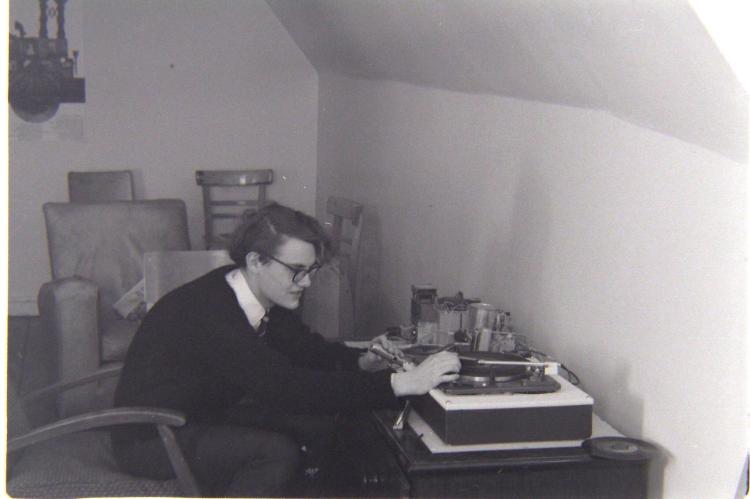
LITTLE M PIRATE RADIO 1965-1966 PART ONE from Andrew Taylor (the founder)
I am happy to accept full responsibility for Radio Midhurst: statute of limitations and US citizenship should protect me.
My father, Dennis Taylor, was a teacher at Midhurst Secondary Modern School, and then at the Grammar School. He developed an interest in amateur radio, and had several amateur radio manuals that described how to build transmitters. He and I disassembled old radios and TVs for spare parts. He assembled a short wave radio receiver and also had a war surplus short wave radio.
I was a Grammar School student from ~ 1959 to December 1966.
Offshore pirate radio stations were very popular in the mid 1960’s. I decided to build my own transmitter and found a simple design in one of my father’s books.
I chose 310 meters on the medium wave-band a) because it was a “quiet” spot on the dial and b) because I saw a Crystal at that frequency advertised in a magazine. In fact I couldn’t afford the crystal but stuck with the wavelength anyway. I did appropriate calculations from the amateur radio handbook, wound a coil round a cardboard tube, and was probably as surprised as anybody when the transmitter actually worked and broadcast on the expected wavelength.
As you can see from the photos, the setup was remarkably amateurish. Needed electrical shielding was provided by soldering an empty tin can over the components. The power supply was scavenged from my father’s war surplus radio. The whole thing was built on a chassis scavenged from an old TV
I recall first setting it up in the Midhurst Grammar School physics lab, using a school power supply, and lots of kids clustering around outside listening on their transistor radios. We then moved it to the 6th Form -2nd floor boarders common room, and Richard Stephenson climbed up a big nearby tree to string the aerial. (clear nutter in those days Richard-Ed)
The whole thing was a sort of “open secret”. My parents knew about it (in fact they came back from a trip to London and presented me with the main valve for the transmitter!). The school knew about it, but it was the end of the summer term, and we only broadcast during school breaks, lunch hours and after school.
A fellow student was the son of someone in the Post Office, and we hoped to be alerted to Post Office detector vans. There were none!
We called ourselves “Little M on 310” – the actual pirate station Radio London called itself “Big L”. We tried to pretend that we were an actual pirate station moored off the coast at Bognor Regis.
The microphone given to Midhurst Museum was lent to the station by MGS Boarder Jeremy Bloomfield, who then sold it to me. Richard Stephenson and I also shared an interest in stage lighting. I do not recall how it got to him.
I am also responsible for the photo of the station (taken in the boarders’ 6th Form common room)
As I recall the station ran at the end of summer term in 1965 and 1966. It had a range of a mile or two. At one point I hooked it up at my home, using my dad’s big aerial at our house in June Lane, put the microphone next to a loudly ticking alarm clock,and set off walking with my transistor radio. As I recall, it faded out somewhere in the middle of Easebourne. (A couple of miles from the source Ed.)
CHRISTOPHER GORNIAK AT THE CONTROLS
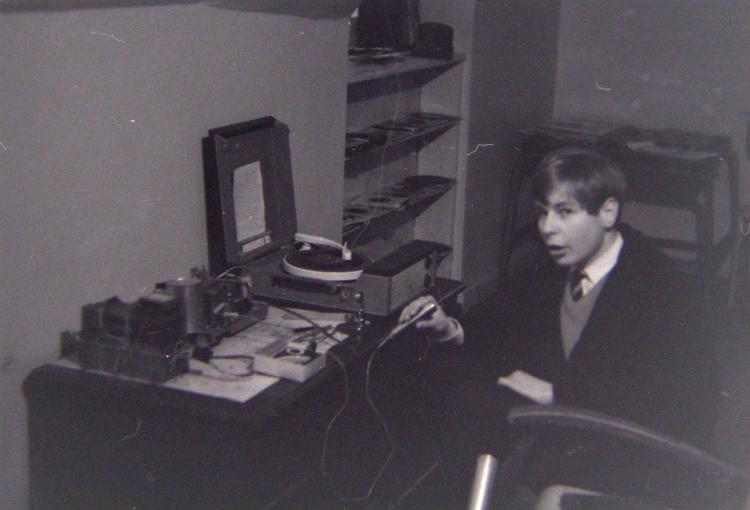
BELOW FRANCIS (FRED) POTTER GROOVING TO THE SOUNDS
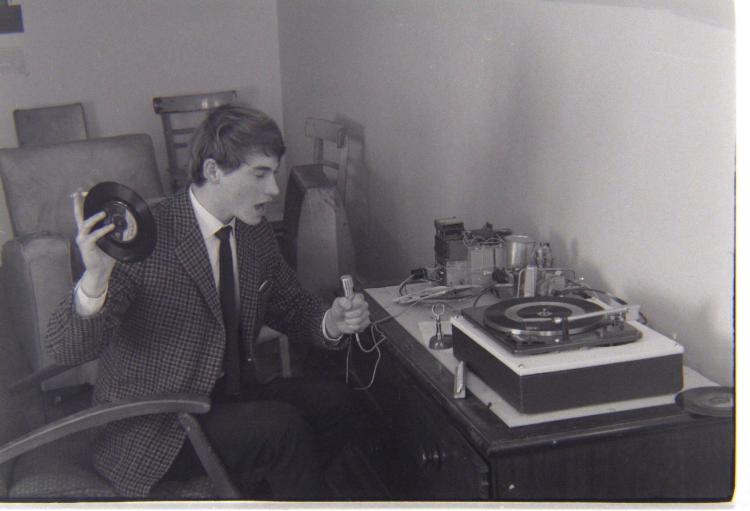
LITTLE M (PART 2) (By Richard Stephenson)
Radio Midhurst Introduction.
Little M”. In my time, there were three radio enthusiasts in the boarding house – Robert Venning, Francis Potter and myself. There was also Andrew Taylor who, though a dayboy was also a radio enthusiast and in the Science 6th and was almost considered as an honorary boarder. There were also legends of a Radio Midhurst having existed in years long past … which some of us were keen to recreate. Eventually Andy put a transmitter together … and the rest is history. I met up with Bob Venning again at the MGS reunion held in 2002 (I think it was – might have been 2000) and in an email correspondence later we discussed Radio Midhurst’s earlier history at length. He had left Midhurst by the time that “our” Little M happened, but he remembered an earlier one and assured me that there had been spasmodic Radio Midhursts for many years, whenever someone with the know-how and access to the right equipment happened to be in residence. As he put it, “There have been Radio Midhursts since the days of the Spark Transmitter” (an early form of radio transmitter from the very early 20th Century). “Indeed,” he added “we often did have a spark transmitter when someone (he did mention a name but I have forgotten it) applied too much anode voltage !
MORE RICHARD STEPHENSON- this is an excerpt from email sent to Midhurst Museum
“THIS IS RADIO MIDHURST – ‘LITTLE M’ – BROADCASTING FROM A ROWING BOAT JUST 10 MILES OFF THE ISLE OF WIGHT” ! Oh no it wasn’t, it was coming from the 6th Form Common Room, on the top floor of Midhurst Grammar School Boarding House !
I was a Boarder at Midhurst Grammar School from 1962 to 1967 and, along with most of the rest of the boarders there at that time, got up to various acts of mischief under the guise of what we then referred to as “Boarding House Spirit”.
It was known that at various times in past years some boys with appropriate technical skills and access to the right equipment had occasionally built their own radio transmitters and we wanted to do the same – After all this was the ‘60s, the era of – among other things – the Pirate Radio Stations. There was Radio Luxembourg, Radio Caroline and Radio London which was known as “Big L” – so why not Radio Midhurst … or “Little M” ?
Round about 1966(Summer term of 1965 according to Andrew Taylor the manufacturer of the transmitter-ed.) a home made transmitter appeared, an aerial was rigged to the top of a tall tree (well, as far up it as I could climb, anyway), a microphone and record deck were added and various collections of records were borrowed from members of the boarding house community. We adopted the record “Green Onions” by Booker T and the M.G.s as our signature tune – and Little M went on the air !
Since to be anything like legal (licensed radio stations were unknown in this country at that time) one had to be broadcasting from outside the 10 mile limit around the coast, which is why the Rowing Boat just 10 miles off the Isle of Wight was invented … though I don’t think anyone really believed it. As one of the most active D.J.s I would sometimes leave it with an L.P. playing (perhaps 20 minutes of music) whilst I went down to Midhurst Youth Club to ask for any requests. There were often several youths listening to it on car radios outside there. I would then get back to the transmitter and make up a tale of a speedboat trip back to our Rowing Boat out at Sea … and play the requested records !
We had a couple of near misses. On one occasion a friendly housemaster quietly suggested to me that I should make sure that the Headmaster was not in his daytime study before we went on the air as apparently he had picked up his telephone one day and heard my voice ! It was only then that we realised that our aerial ran right across the telephone line to his study.
On another occasion someone came rushing in to say that there was a GPO radio detector van outside ! This was something we had anticipated happening and had planned for. Within minute the record deck and monitor amplifier had turned into an innocuous record player, the aerial was for someone’s perfectly legal crystal set, and the transmitter itself – there was no way of disguising that – was wrapped in polythene and hidden at the bottom of the swimming pool, the waters of which were so murky that most of the time no one really knew what was down there at the bottom of the deep end. Surprisingly, when the alarm was over and all the parts retrieved and reassembled … it still worked !
Fast forward now to 2017. One of the past pupils (Andrew Taylor the creator in chief -ed.) of Midhurst Grammar involved with Radio Midhurst posted a photo of the transmitter in action, on Facebook. I saw it, looked closely and saw the microphone – which I still had, hidden away in a box out in my garage. (Microphone has now been donated to Midhurst Museum on Knockhundred Row, in Midhurst ed.)
A very young Hugh Robertson Ritchie
